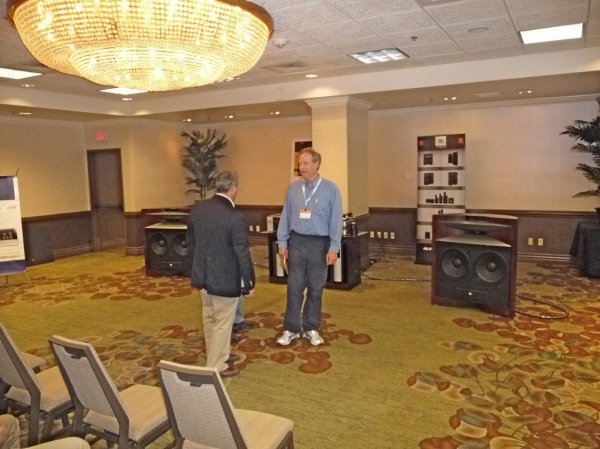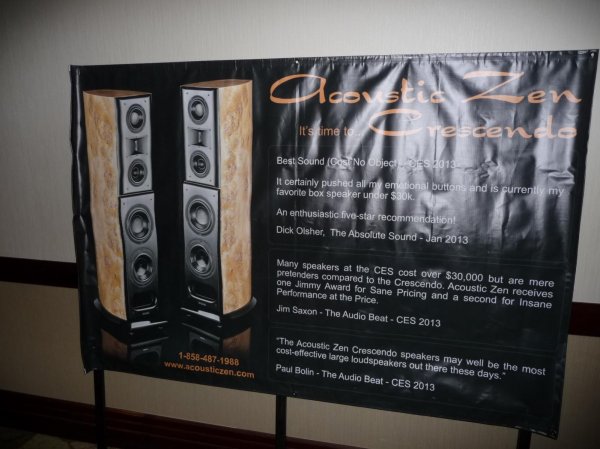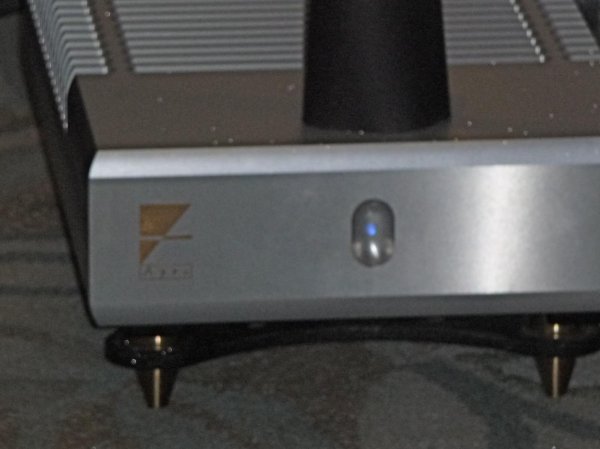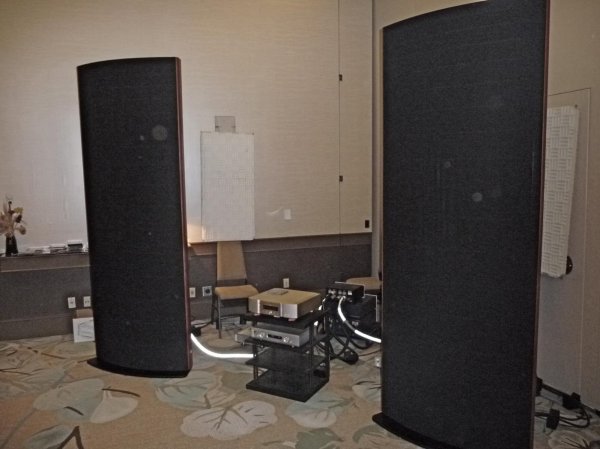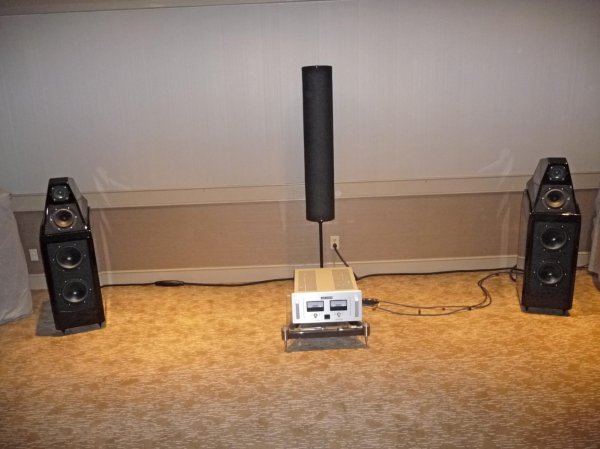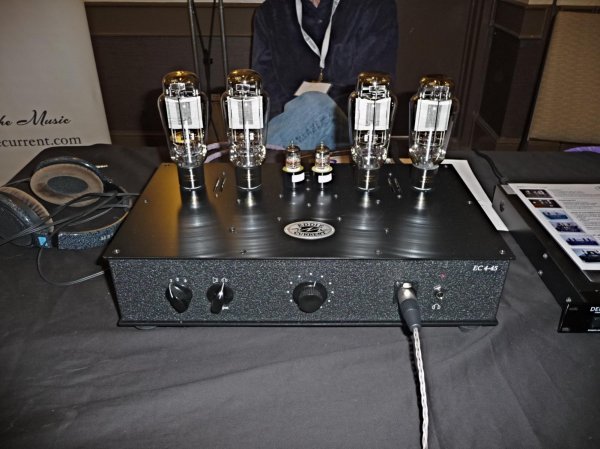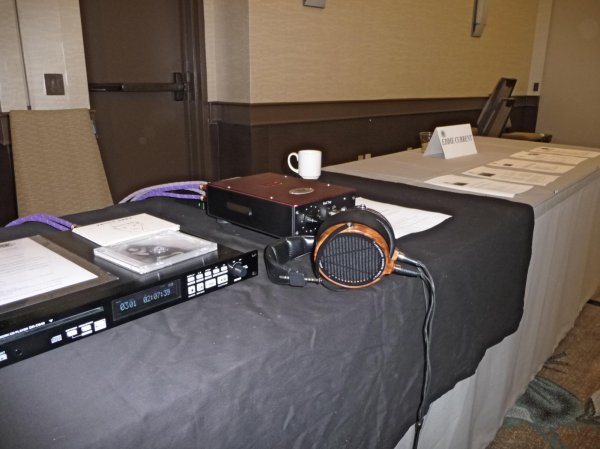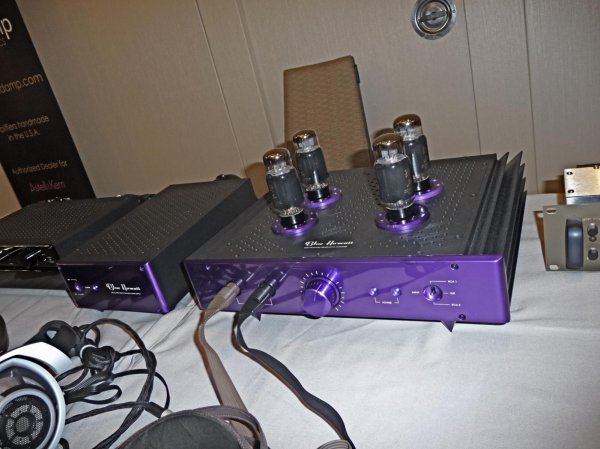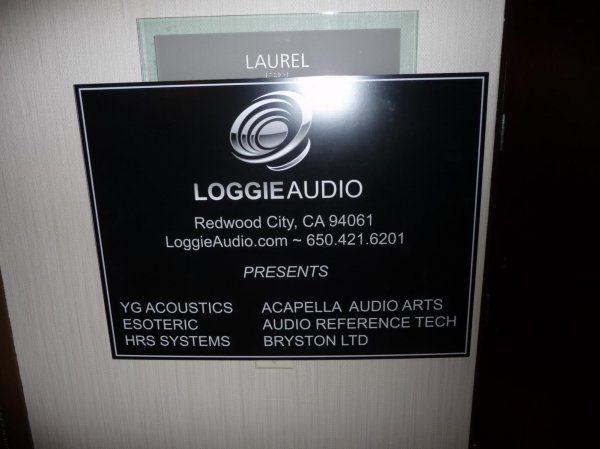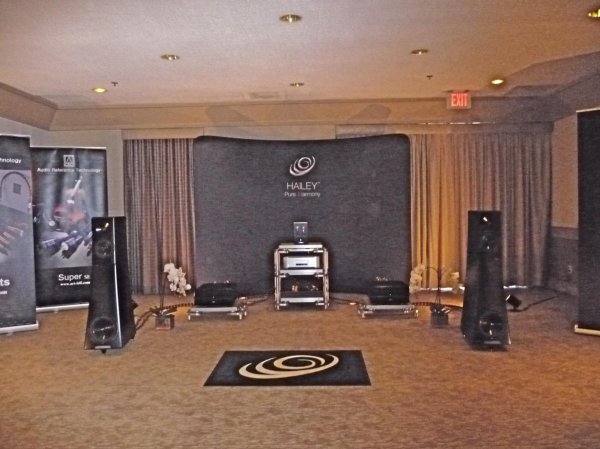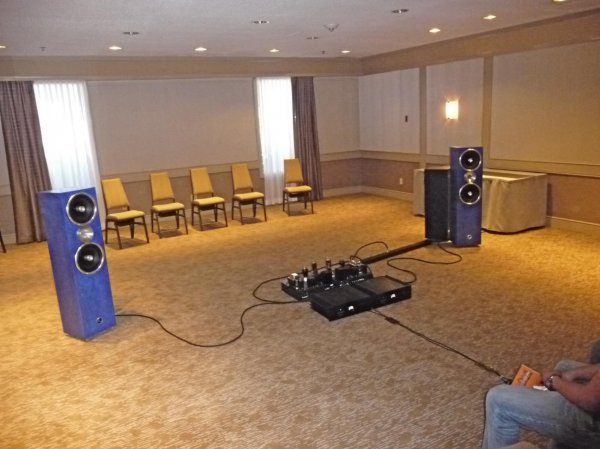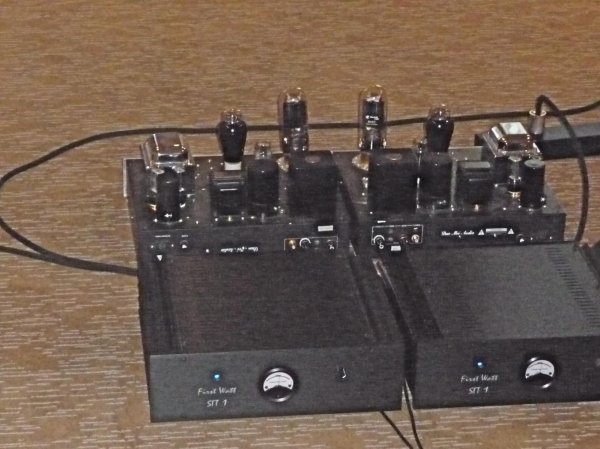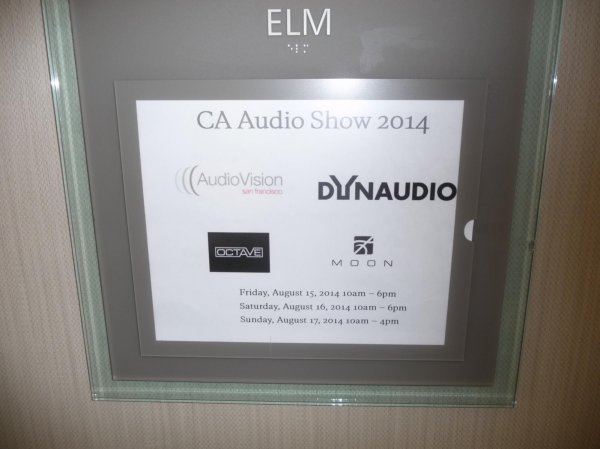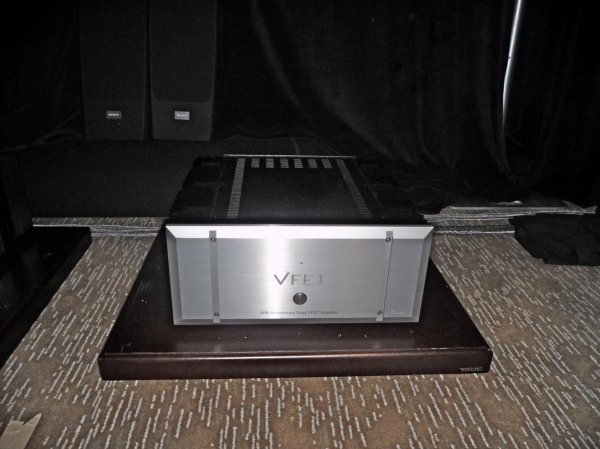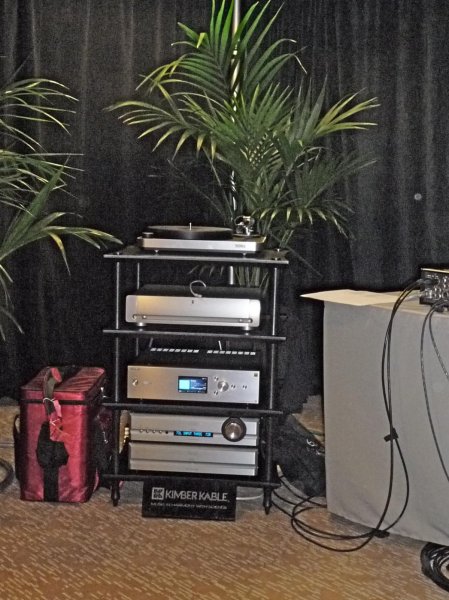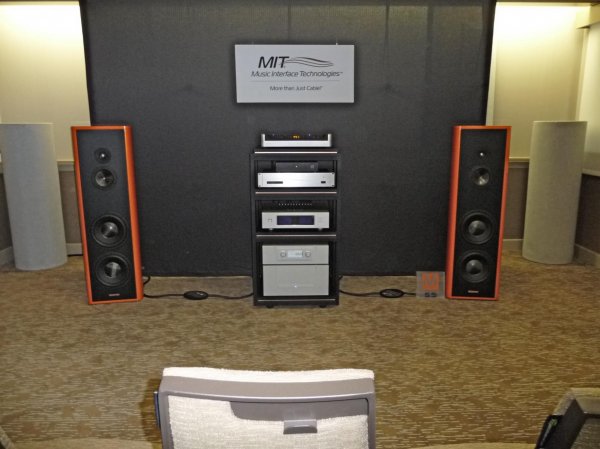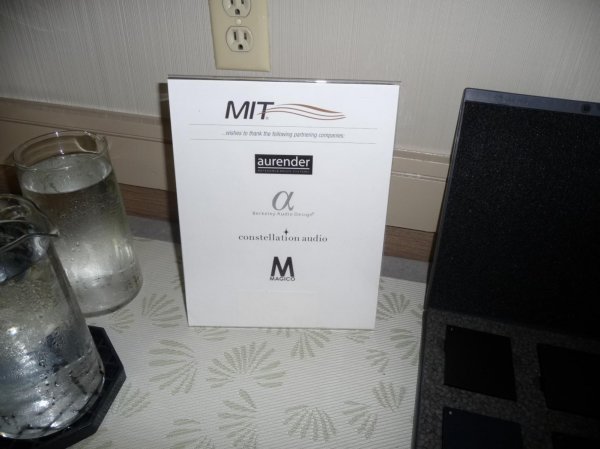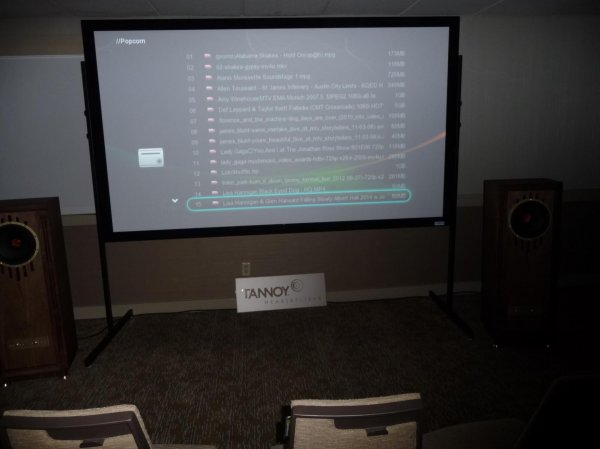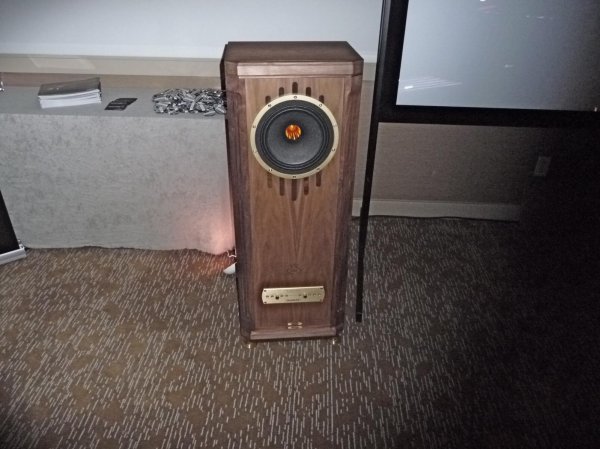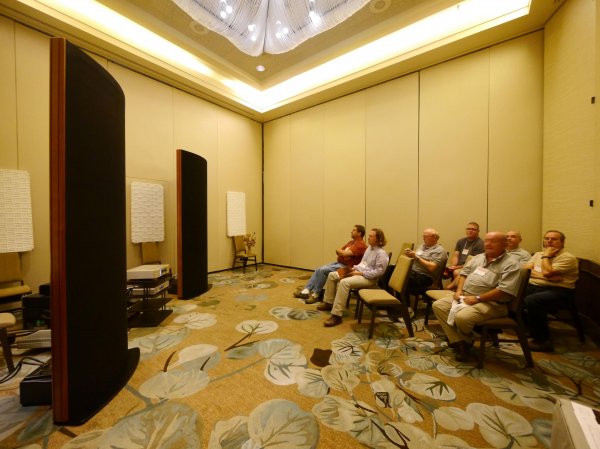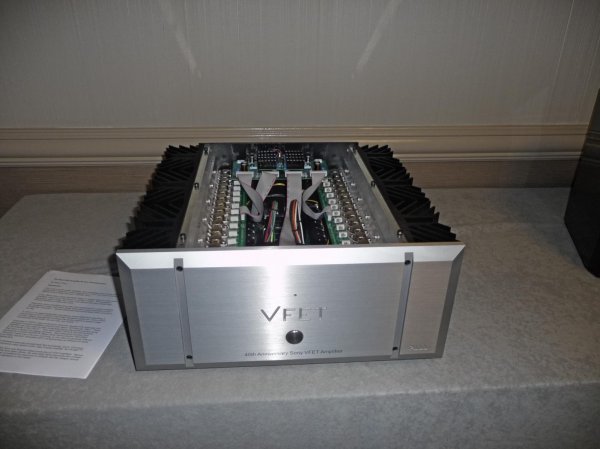
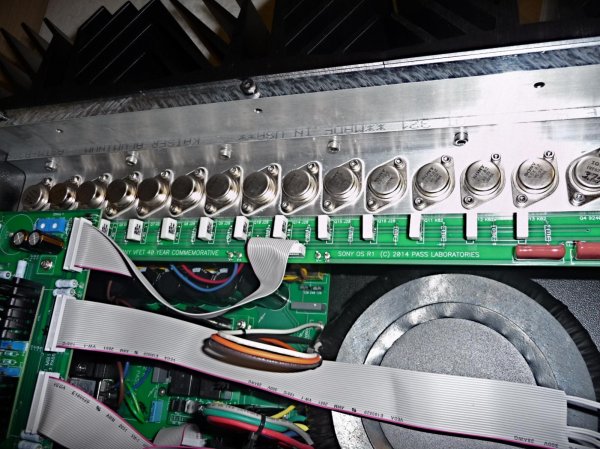
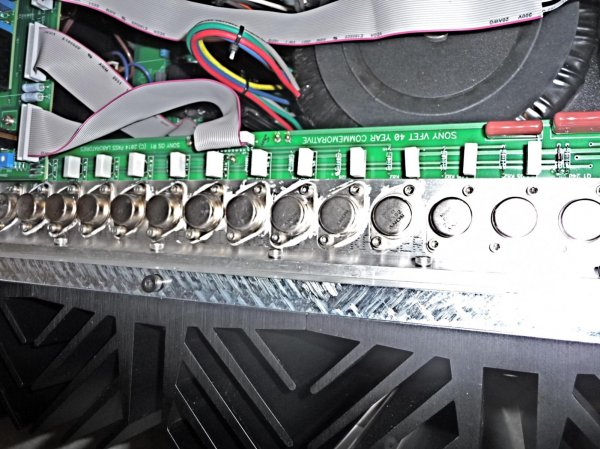
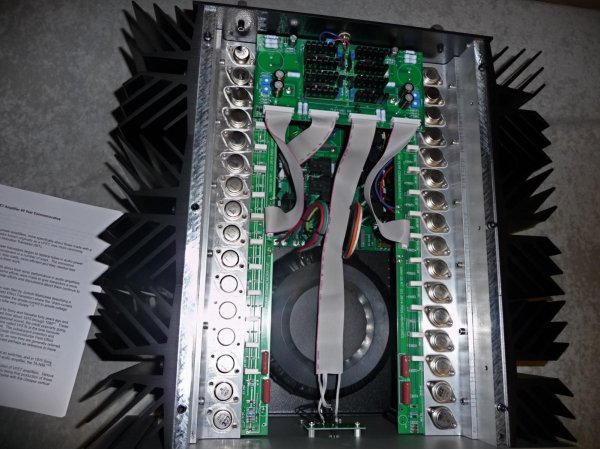
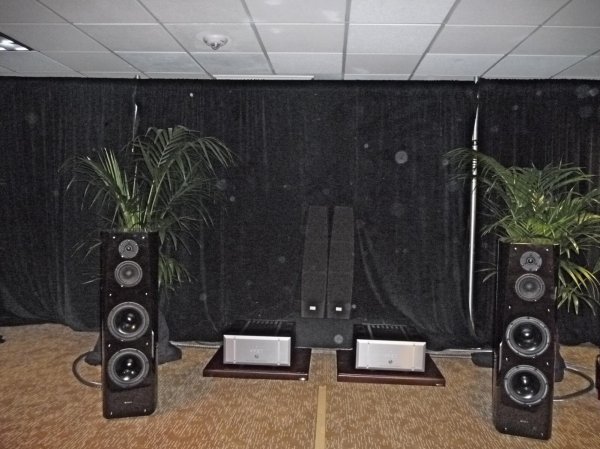
OK, I'll say it, I won't designate a "Best in Show" sound because there were just so many good sounding rooms to me, rooms that any audiophile would be proud of and representing good synergy.
However I WILL say that my favorite was the Sony exhibit this time.
I was astounded when walking in to see a big ole hunk of amplifier aluminum with VFET emblazoned across the front. I thought, aha, Sony is going to start manufacturing VFET devices again! Seeing this amp was worth the whole visit to the show.
Unfortunately, no, Sony is not making VFETs again (yet?). The amps presented at the Sony display are VFET "unobtanium" since Sony must have gone into it's dusty warehouse and pulled out a bunch of the older VFETs and gave them to Nelson Pass to construct their 40th anniversary VFET amp. They have no price and are not for sale. Nelson Pass made only five pairs.
I am hoping that this means Sony is considering the manufacture of these devices again with another VFET amp product line.
Without a lot of circuit knowledge, they appear to employ about six push pull pairs of VFETs per side of the amp, flanked by a four non-VFET transistors, maybe voltage regulators or FET drivers.
I meant to look at the back of the amps, to see if they were stereo that could also be doubled up in mono, but I forgot. Sony was running the demo pair as monoblocks and the Japanese representative said they were 200 watts per channel.
This means that the VFETs are run very conservatively, because a pair usually is good for 30 watts push pull, and twelve pairs should easily put out 360 watts with a 3db overhead, doubling the power on transients.
I am currently running three VFET amps from the late 70's in my main home system, a Yamaha B2 for my bass panels, and a pair of Sony TA 4650s for my surrounds. They have successfully replaced my previous tube amps in those positions with a marked improvement in overall sound quality. With the main speakers (active crossovers) the trick is to interleave directly heated triode preamp stages in-between the transistorized stages, as observed by Six Moon's Srajan Ebaen's brainstorm that the best amplification now is probably SIT amps with Directly Heated Triode preamps. I agree with this observation. On my Analysis Epsilon midrange ribbon, I also now run a non-Vfet Nelson Pass M2 First Watt amp driven from a mercury vapor rectified 26 DHT tubed preamp. Sublime.Who would have thought that certain transistor amps and DHT tube drivers would be one the best audio synergies extant. I am a hard core tube guy, and pulling me away from my precious tube amps is no mean feat.
These VFET beasts were operated with the Nelson Pass transistor preamp, I think the XP 20. However, I think if you could get ahold of these VFET amps and run them with a directly heated triode preamp like the Allnic L5000, you would just be done, as long as your speaker du jour was 4 ohms or higher.
How did they sound? I just went back over and over and spent a lot of my listening time at the show in front of the Sony-Pass display.
They just do everything right, space, location, size, dynamics, tonality. The upper midrange is very natural and DEEP. I got synthesesia and started thinking of colors as I heard upper midrange and high frequencies. Similar to listening to my Yamaha B-2 VFET full range through my bass panels, only more and better. The Pass-Sony VFET amps were butt glue for me, the kind of dreamy, forever sound that I like. I would just love to hear them with a DHT preamp link. Source material was DSD and Hi Res digital, so I would also like to hear them with vinyl. The turntable wasn't functioning in the display.
Editing note: I found the Pass monograph on the VFET amps and read it. Yes, they are monos with 24 devices in push pull pairs per mono block. The power rating is for Class A, apparently, rather than AB, thus the conservative rating (very Nelson Pass-like). I am surprised they are Class A, because I put my hand on them and found them to operate warm but not really hot hot hot. They did have some kind of shutdown during one of the demos, so maybe hair trigger safety circuitry?
Also, by way of attribution, I gather this was a project Nelson Pass embarked on his own by obtaining a supply of the old Sony VFETs and not a joint collaboration, at least not at first.
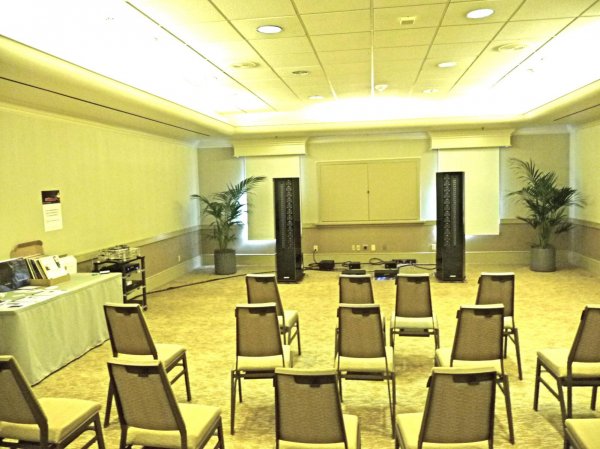


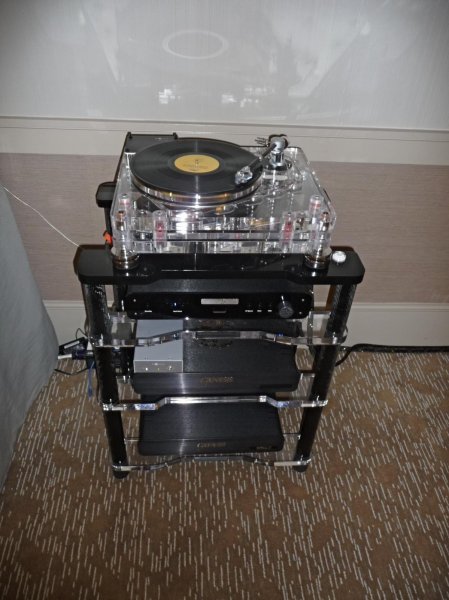 First stop was Gary's Genesis Dragon Jr. room. Had a nice chat with Jack Roberts of Dagogo who was cleaning his records in the KL record toaster.
First stop was Gary's Genesis Dragon Jr. room. Had a nice chat with Jack Roberts of Dagogo who was cleaning his records in the KL record toaster.

